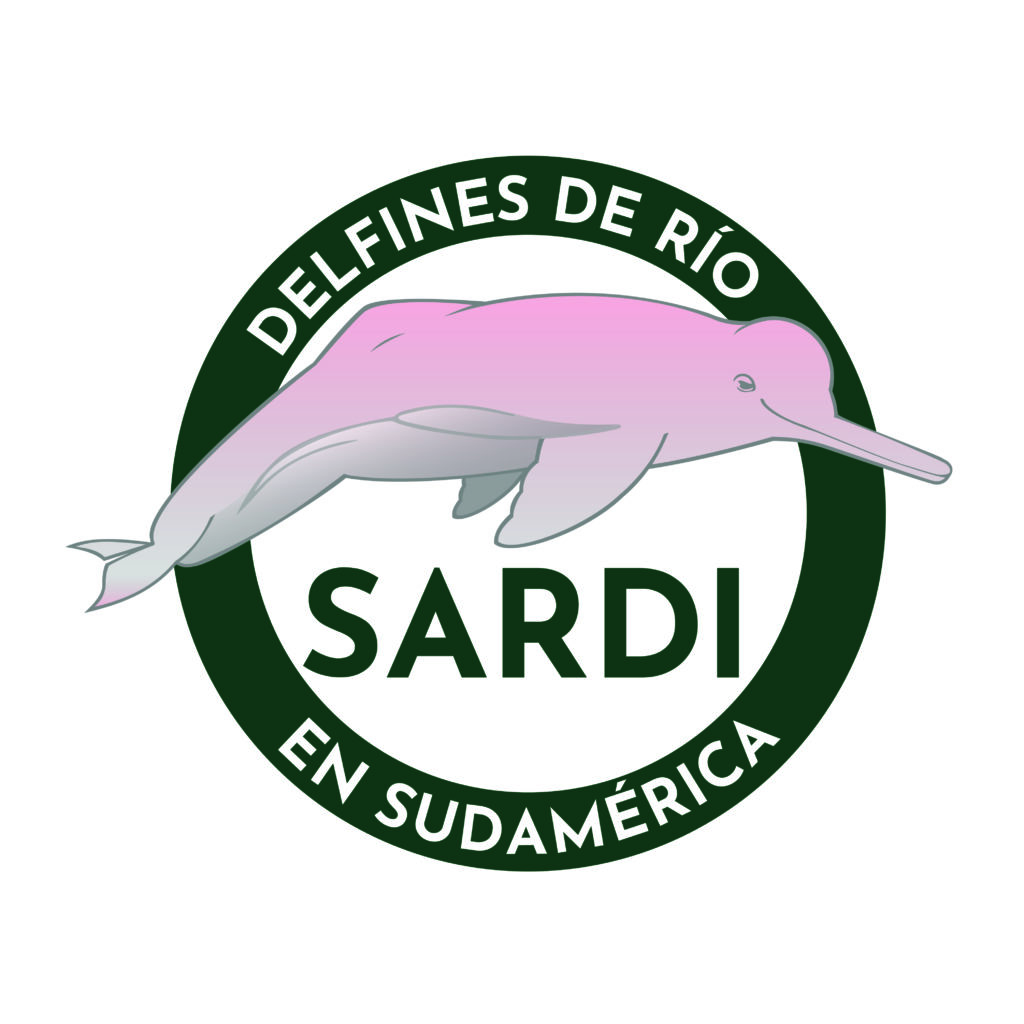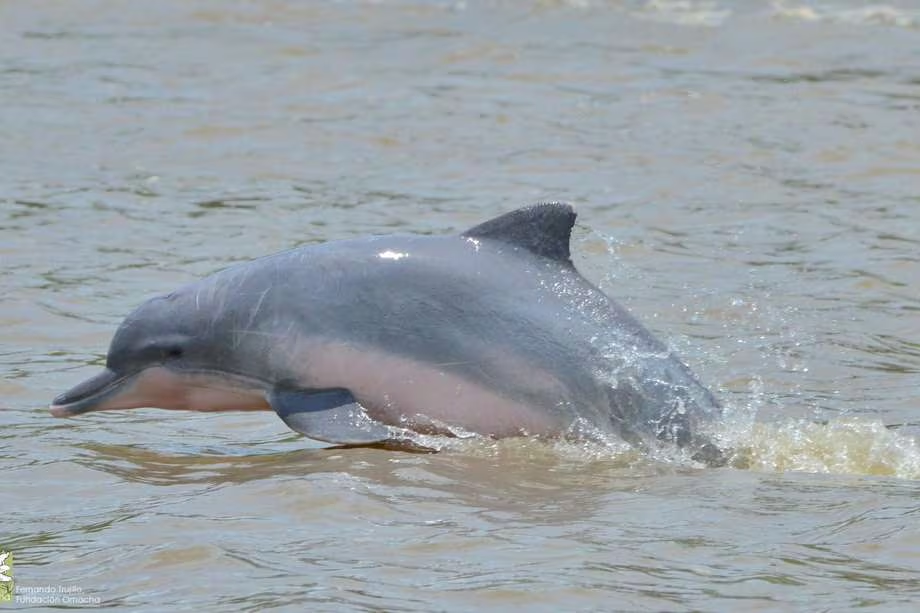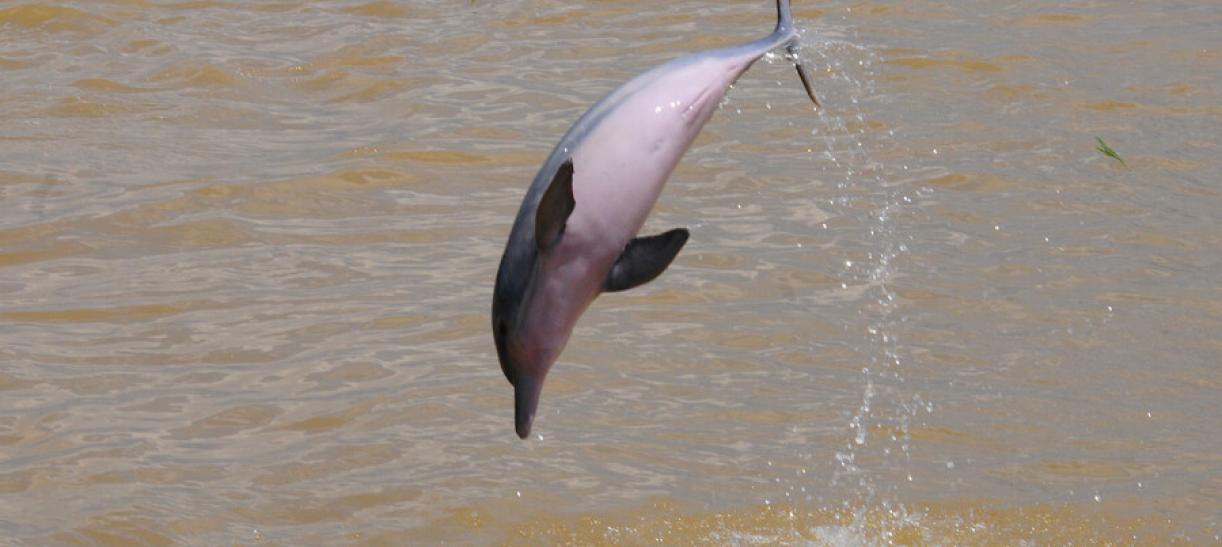The death of 154 river dolphins in Lake Tefé, in the Brazilian Amazon, was a reminder of the urgency of protecting these endangered freshwater cetaceans. This happened at the end of September 2023, in the midst of an intense drought, when the lake located in the interior of the state of Amazonas experienced a critical situation: the volume of water dropped drastically and it warmed up to 40 degrees Celsius, 10 above the historical average. Experts attribute the catastrophe to climate change.
“For us, it is a crisis. In one month, more than 10% of the populations of the two species of dolphins that inhabit Lake Tefé died; we had never seen that before. It is climate change. The water is greatly diminished, but temperatures also rose to 40 degrees. Dolphins, in general, are not very sensitive to temperatures, they do not care much, but this was like cooking them. “They didn’t survive,” describes Daphne Willems, global leader for the study of river dolphins at the World Wildlife Fund (WWF).

The mass death of the cetaceans occurred just a few weeks before the International River Dolphin Day, which is celebrated annually on October 24. This 2023, the commemoration of the date called for an international meeting in Bogotá, Colombia, in which key actors for the conservation of these mammals in the world participated. There, topics such as the political context surrounding dolphins, the socialization of success stories and a continental work session were addressed.
The main objective of the meeting was the signing of the Global Declaration for River Dolphins, promoted by the Colombian government, together with WWF, the Omacha Foundation, the World Bank and specialists who make up the South American River Dolphin Initiative (SARDI).https://www.youtube.com/embed/3Y7fEkJllJ8?si=mpYD5tEZr41IfkBN
The declaration commits the 14 countries where the six species of river dolphins in the world live —Bangladesh, Bolivia, Brazil, Cambodia, China, Colombia, Ecuador, India, Indonesia, Myanmar, Nepal, Pakistan, Peru and Venezuela— to implement specific actions and strengthen regional and national initiatives for their protection. So far, nine of these countries have signed the declaration, two more are in the process of signing —Peru and Pakistan—, with China, Myanmar and Indonesia still pending.
According to WWF, this Declaration focuses on stopping and reversing the decline of all river dolphin populations; creating a network of protected and well-managed river habitats; boosting research on these mammals and monitoring of threats; collaborating with local communities and indigenous peoples; eradicating unsustainable fishing practices; collaborating with industries to improve water quality and ensure its quantity and connectivity; promoting and celebrating World River Dolphin Day, raising awareness; as well as allocating relevant resources to achieve all of the above.
“The crisis facing river dolphin populations has not yet received the international attention it deserves, and saving these species is a mutual responsibility that also benefits rivers and wetlands,” reads the Global Declaration document.


Los delfines de río viven en varios de los ríos más grandes del planeta: Amazonas, Irawadi, Ganges, Indo, Mahakam, Mekong, Orinoco y Yangtsé. En sus márgenes confluyen cerca de 1 000 millones de personas. Por ello, en una carta de preocupaciónrespecto a lo ocurrido en Brasil, publicada el 17 de octubre de 2023, la WWF explicó que los cambios climáticos registrados en los afluentes de la Amazonía no sólo afectan a los delfines, sino también a poblaciones enteras en el país sudamericano, y algunas en Perú. Muchas de las comunidades a las que sólo se puede acceder a través de ríos, ya se encuentran aisladas y otras corren el riesgo de que esto suceda.
Los ríos, en varias zonas, ya son intransitables. Esto imposibilita el transporte de alimentos y medicinas, además de poner en riesgo el suministro de agua. “Se estima que en la región ya son cerca de medio millón de personas afectadas y, sólo en el estado brasileño de Amazonas, 55 de los 62 municipios han declarado el estado de emergencia”, explicó la WWF en el documento.
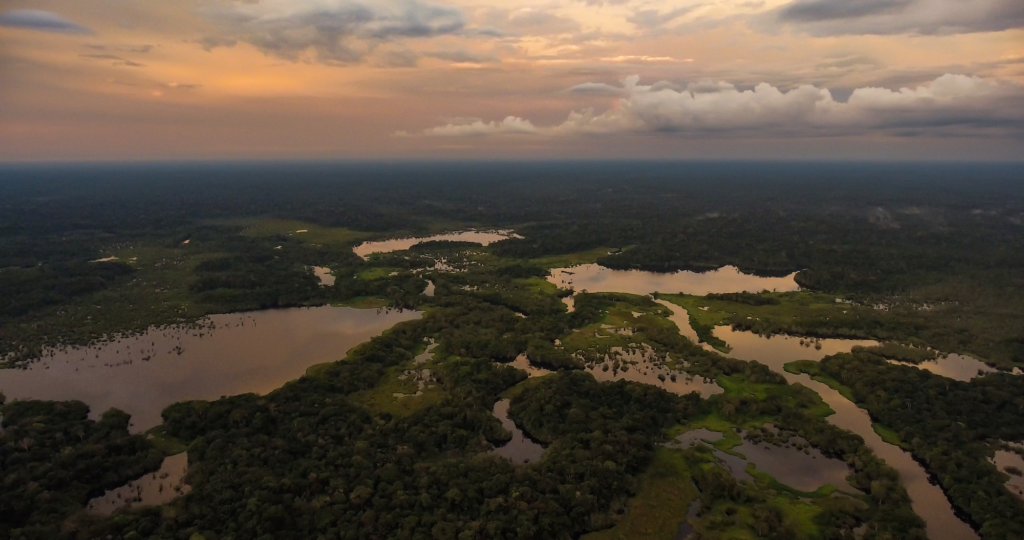
Para los expertos, la emergencia en Brasil muestra que el cambio climático puede generar impactos y que los países no están preparados. “Son efectos que no veíamos venir”, dice Fernando Trujillo, biólogo especialista en delfines de río y director científico de la Fundación Omacha, organización que, por más de 30 años, ha monitoreado los ríos Amazonas y Orinoco, afluentes que habitan estos animales en Colombia.
Aunque los estudios todavía se encuentran en curso en el Instituto Mamirauá de Brasil, el especialista adelantó que la principal hipótesis sobre lo ocurrido en el lago Tefé, está asociada a que las altas temperaturas del agua provocaron el estrés fisiológico de un alga que libera una toxina capaz de atacar el sistema nervioso central de muchas especies, entre ellas los delfines.
“Por el momento, en Brasil, se han construido barreras físicas con troncos para evitar que los delfines accedan a estas áreas someras en donde el alga está liberando la toxina. Esto ocurrió en el lago Tefé en Brasil, pero puede ocurrir en cualquier momento y en cualquier parte de la Amazonía. No estamos preparados para esto. Así que la Declaración Global también nos va a generar un mecanismo de cooperación internacional para tener estas lecciones aprendidas y prepararnos”, afirma Trujillo.
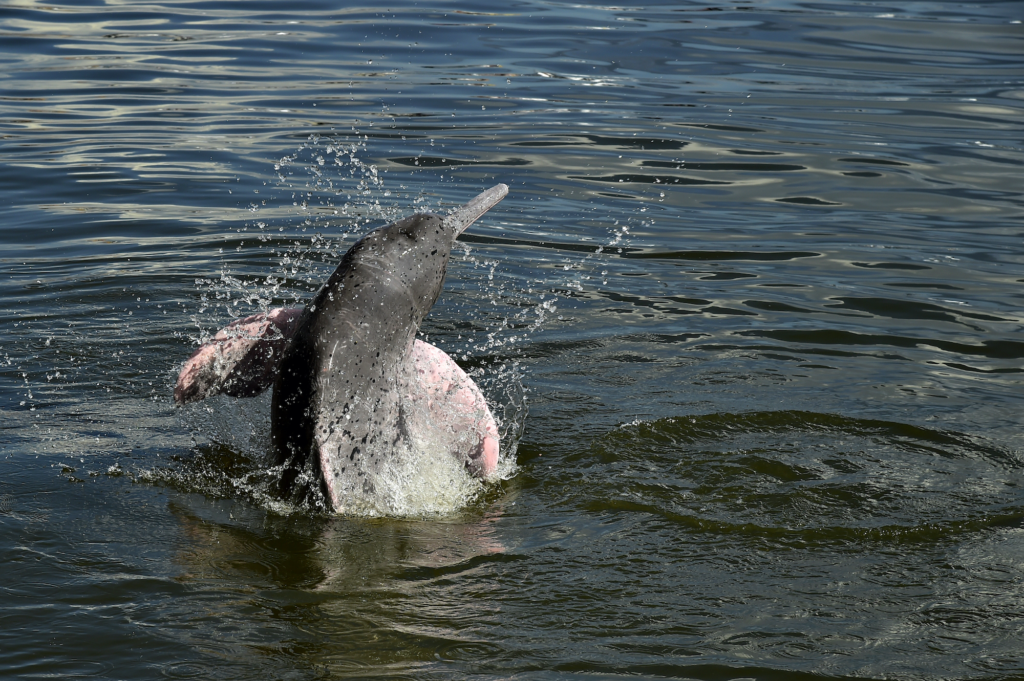
The importance of dolphins
River dolphins are fascinating species. They are considered the main predators in some of the largest river systems in the world. Although they are often underestimated, they are key pieces in maintaining ecological balance. Their presence allows us to evaluate the health of the ecosystems they inhabit. If dolphins are well, it is likely that rivers and fish populations in general are also well, as well as many other species of wildlife, communities and companies that depend on them for fishing, drinking water and irrigation, as well as transportation.
“Dolphins play a fundamental role in the ecosystems they inhabit: they are indicators of their health. Therefore, in healthy rivers, people and other species can live and continue to depend on them,” explains Tarsicio Granizo, director of WWF in Ecuador.
The six species of river dolphins that inhabit the planet are the pink Amazon dolphin (Inia geoffrensis), the Ganges dolphin (Platanista gangetica), the Indus dolphin (Platanista minor), the Irrawaddy dolphin (Orcaella brevirostris), the tucuxi dolphin (Sotalia fluviatilis) and the Yangtze finless porpoise (Neophocaena phocaenoides), the only freshwater dolphin in the world. All of these species live in constant threat, according to the WWF organization.
These dolphins face the effects of unsustainable fishing and trawling, climate change, pollution, illegal mining, direct hunting of specimens and various forms of infrastructure built in the water.
The consequences have been devastating. Since the 1980s, the numbers of all river dolphin species have plummeted by 73% and all are categorized as Endangered or Critically Endangered on the International Union for Conservation of Nature (IUCN) Red List of Threatened Species.
The problem is so serious that, in fact, a seventh species of river dolphin – the Chinese or baiji (Lipotes vexillifer), endemic to the Yangtze River – was declared probably extinct in 2007.
“In Asia we have two species in Danger, but there are two others Critically Endangered. In Colombia and the rest of the Amazon, the situation is the same: we don’t know how many individuals there are, but we do know that the trend is negative. We have fewer dolphins now than a decade ago. In Peru and Ecuador, the trend is the same, which is why it is so important for countries to work together, because the threats and conditions are often very similar,” explains Daphne Willems.
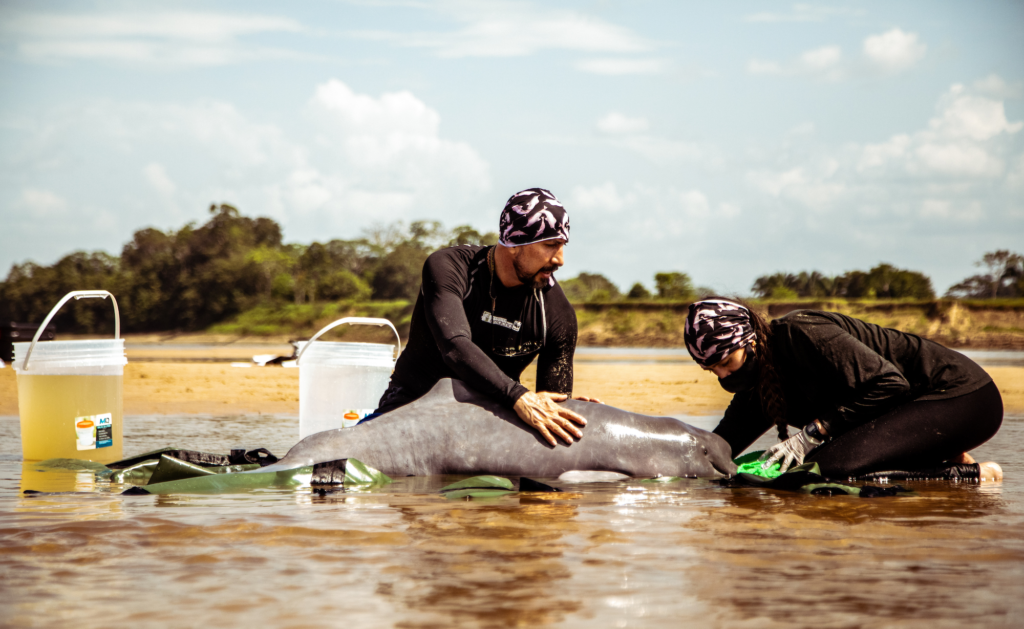
Elizabeth Campbell, a biologist and expert in river dolphin conservation and abundance and an academic at the Universidad Científica del Sur in Peru, points out that these mammals face numerous threats in the country’s Amazonian ecosystems, so it is necessary for them to gain visibility in front of the government and be able to protect them. In addition, she believes that the consequences of climate change on these species have not been studied in depth, so the Peruvian government can also take the situation with dolphins in Brazil as an example.
“We know, from different projections, that in the jungle there are areas where there will be more or less rain, and that is also a threat because we do not know exactly what could happen. But in Brazil we are seeing how its government has had to act quickly to be able to respond to these mass strandings, something that has not happened before. Peru can learn from the situation in Brazil, to consider how the government could respond to such an event, how would they be prepared for that? With the coalition [of the Global Declaration], governments can exchange knowledge,” says the specialist.
In this regard, Campbell believes that the recently signed Global Declaration “is an excellent initiative. What has happened is that each country has different objectives, policies and conservation guidelines, but dolphins are not limited to a certain country or area, but rather they move around, so it is better that we align ourselves and that in all countries they have the same protection.”
Efforts to save the dolphins
Around the world, conservation efforts have brought hope for halting the decline of some river dolphin species. In China, for example, after decades of seemingly irreversible decline, the results of the latest census of the Critically Endangered Yangtze finless porpoise “showed a 23% increase in the population over the past five years, the first increase since records began and the result of strict protection measures and conservation efforts. Despite this, only 1,249 Yangtze finless porpoises remain,” WWF notes.
In Indonesia, beacon-emitting devices have successfully prevented dolphins from dying due to contact with fishing nets, while increasing fish catches for local communities. Over the past 20 years, the Indus River dolphin population has almost doubled, yet there are only about 2,000 individuals left.

“Governments cannot do much alone. In the Global Declaration, there are a number of institutions that help, organizations that are working on monitoring and raising awareness, but there are also private sector actors that support to be able to carry out the projects. There are international conventions and many foundations that also help. That, at the end of the day, is key,” adds Willems.
A very important actor is the local communities, “because they have the information, they have the connection and I think we must all work together; otherwise, we will not be able to remedy the situation of the threatened dolphins and the rivers they inhabit that do not function as they should. Communities are the eyes and ears of the rivers, they live with the species,” says the expert.

Fernando Trujillo believes that the Global Declaration is the materialization of a struggle promoted by civil society, through non-governmental organizations that, with few resources, have investigated and worked to generate information that will now be part of public policies in their respective countries.
“Dolphins are beginning to be a magnifying glass that we can apply in certain geographic areas, in South American and Asian rivers, to try to do positive things for these ecosystems. Ten years ago, nobody knew about river dolphins. Now people are understanding that through their conservation we can open a window of opportunity for these great rivers of the world, to be able to conserve them and improve the quality of life of the people who live there,” explains the expert.

Tarsicio Granizo explains that a solid network of well-managed protected natural areas can be key to changing the situation of river dolphins. Two examples of this in Latin America are the Cuyabeno Reserve and the Yasuní National Park in Ecuador.
“These areas should have updated management plans and a corps of park rangers that help with the conservation, protection and education about these species. Close work is also needed with the communities that live there. Most are indigenous communities that understand that the conservation of these resources—which they have done for hundreds or thousands of years—is the guarantee of their own survival. We have to learn from these people how to manage resources so that they are sustainable in the future,” says the expert.


The Global Declaration seeks, as an ultimate goal, to double the populations of river dolphins in Asia and stop the decline of their populations in South America. This will be achieved by creating a global movement for the appreciation and conservation of river dolphins.
“I am very positive, I believe that we can really change the situation of dolphins, because we have seen it. By 2030 we will see a change for the better for dolphins, but also for entire rivers. It is my passion to achieve this,” adds Daphne Willems.
Therefore, the expert reiterated that there is a need to understand that river dolphins are part of us and that “we are directly related even if we do not feel it. We often think that nature is there in the Amazon, and that we are here, but the reality is that we are interconnected. That is why I think that everyone should be interested in dolphins as a symbol.”
